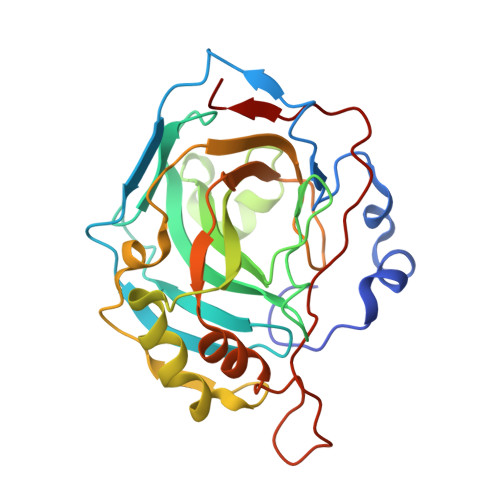Kinetic and crystallographic studies of the role of tyrosine 7 in the active site of human carbonic anhydrase II.
Mikulski, R., Avvaru, B.S., Tu, C., Case, N., McKenna, R., Silverman, D.N.(2011) Arch Biochem Biophys 506: 181-187
- PubMed: 21145876
- DOI: https://doi.org/10.1016/j.abb.2010.12.004
- Primary Citation of Related Structures:
3RLD - PubMed Abstract:
The rate limiting step in catalysis of bicarbonate dehydration by human carbonic anhydrase II (HCA II) is an intramolecular proton transfer from His64 to the zinc-bound hydroxide. We have examined the role of Tyr7 using site-specific mutagenesis and measuring catalysis by the ??O exchange method using membrane inlet mass spectrometry. The side chain of Tyr7 in HCA II extends into the active-site cavity about 7 ? from the catalytic zinc atom. Replacement of Tyr7 with eight other amino acids had no effect on the interconversion of bicarbonate and CO?, but in some cases caused enhancements in the rate constant of proton transfer by nearly 10-fold. The variant Y7I HCA II enhanced intramolecular proton transfer approximately twofold; its structure was determined by X-ray crystallography at 1.5 ? resolution. No changes were observed in the ordered solvent structure in the active-site cavity or in the conformation of the side chain of the proton shuttle His64. However, the first 11 residues of the amino-terminal chain in Y7I HCA II assumed an alternate conformation compared with the wild type. Differential scanning calorimetry showed variants at position 7 had a melting temperature approximately 8 ˇăC lower than that of the wild type.
Organizational Affiliation:
Department of Pharmacology, University of Florida, Gainesville, FL 32610, USA.
















